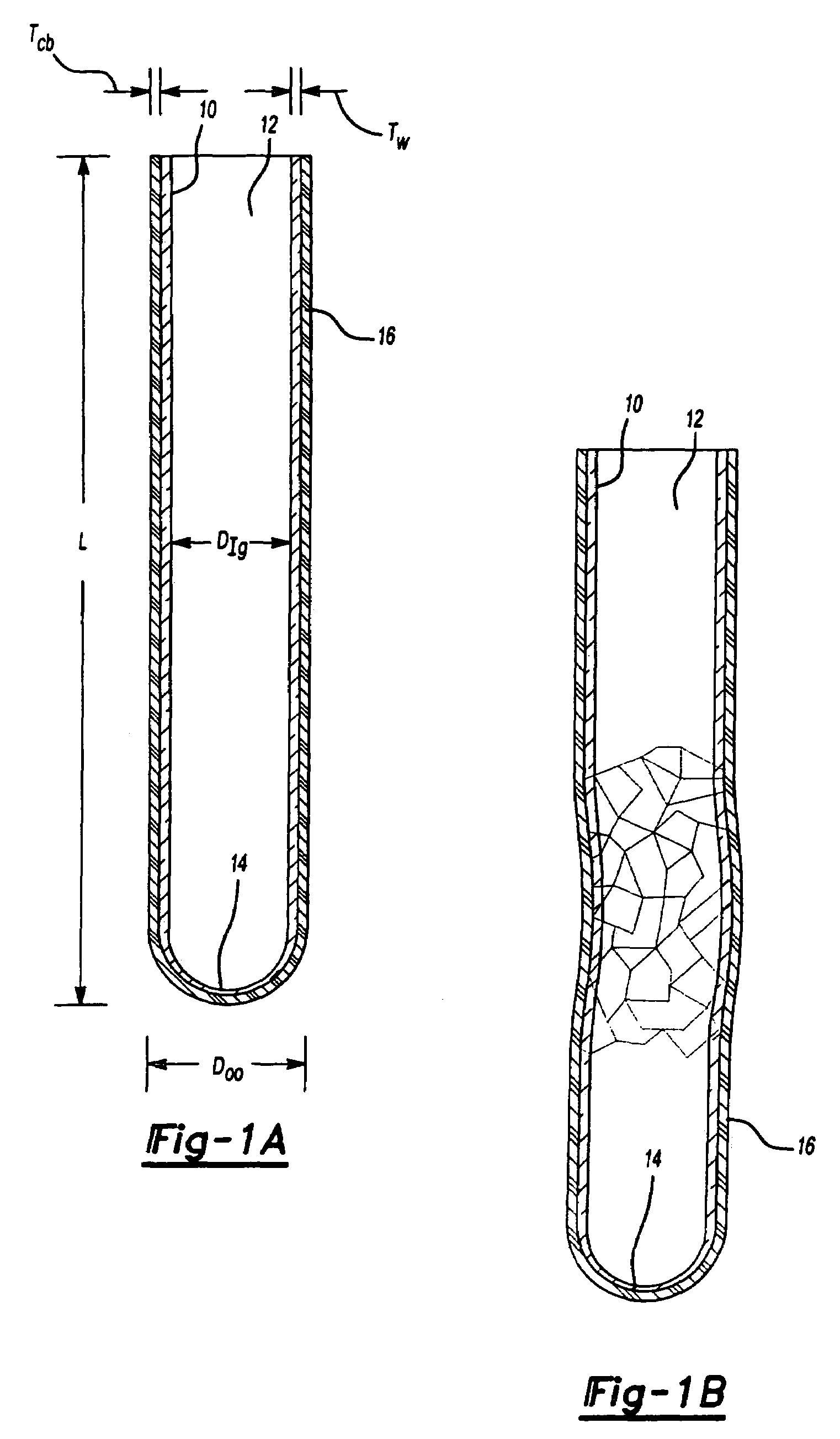Blood collection tube with surfactant
a blood collection tube and surfactant technology, applied in the field of tubes, can solve the problems of affecting the quality of blood specimens, so as to inhibit the digestion of rna, and reduce the non-specific binding of probes
- Summary
- Abstract
- Description
- Claims
- Application Information
AI Technical Summary
Benefits of technology
Problems solved by technology
Method used
Image
Examples
example 1
[0042]A blood sample is drawn by venipuncture from a patient and is captured immediately upon drawing by a previously evacuated soda lime glass tube to which a layer of MYLAR® film is coated over its exterior. The glass tube contains the ingredients of TABLE 1. After refrigeration for 12 hours at a temperature varying between 2 and 10° C., the sample is repeatedly tested by the Westergren method at intervals of two hours for the following two days. Consistent results are observed over the period of 12 to 72 hours from blood draw.
[0043]
ADDITIVE COMPOSITIONper liter% w / vTrisodium Citrate, dihydrate 32 g3.2Anti-coagulantCitric Acid, monohydrate4.2 g0.42Anti-coagulantSodium Azide0.50 g 0.05Anti-microbialBrij ® 351.0 g0.10Surfactant
example 2
[0044]Example 1 is repeated, except the glass tube has no barrier layer. The blood tested shows the same sedimentation rate as the glass tube with the barrier layer. However, upon dropping to the ground the glass fractures and blood spills.
example 3
[0045]Examples 1 and 2 are repeated, except that the surfactant is excluded from the additives. Testing performed at two hour intervals show that after about 6 hours, inconsistent results are thereafter obtained, with a gradual and substantially continuous change of sedimentation rate during the period following 12 to 72 hours from blood draw.
[0046]Blood drawn and handled in accordance with the present invention may be analyzed by any of a number of different techniques, such as are disclosed in CLSI Standard No. H2-A4, hereby expressly incorporated by reference, including without limitation, the Westergren method of erythrocyte sedimentation rate testing, modified Westergren method of erythrocyte sedimentation rate testing, the Wintrobe method of erythrocyte sedimentation rate testing, Zeta Sedimentation Ratio Determination (ZSR) using centrifugation, or otherwise. The tests may be performed manually, or using a semi-automated or automated instrument.
[0047]The methods herein contem...
PUM
| Property | Measurement | Unit |
|---|---|---|
| temperature | aaaaa | aaaaa |
| internal diameter | aaaaa | aaaaa |
| internal diameter | aaaaa | aaaaa |
Abstract
Description
Claims
Application Information
 Login to View More
Login to View More - R&D
- Intellectual Property
- Life Sciences
- Materials
- Tech Scout
- Unparalleled Data Quality
- Higher Quality Content
- 60% Fewer Hallucinations
Browse by: Latest US Patents, China's latest patents, Technical Efficacy Thesaurus, Application Domain, Technology Topic, Popular Technical Reports.
© 2025 PatSnap. All rights reserved.Legal|Privacy policy|Modern Slavery Act Transparency Statement|Sitemap|About US| Contact US: help@patsnap.com


